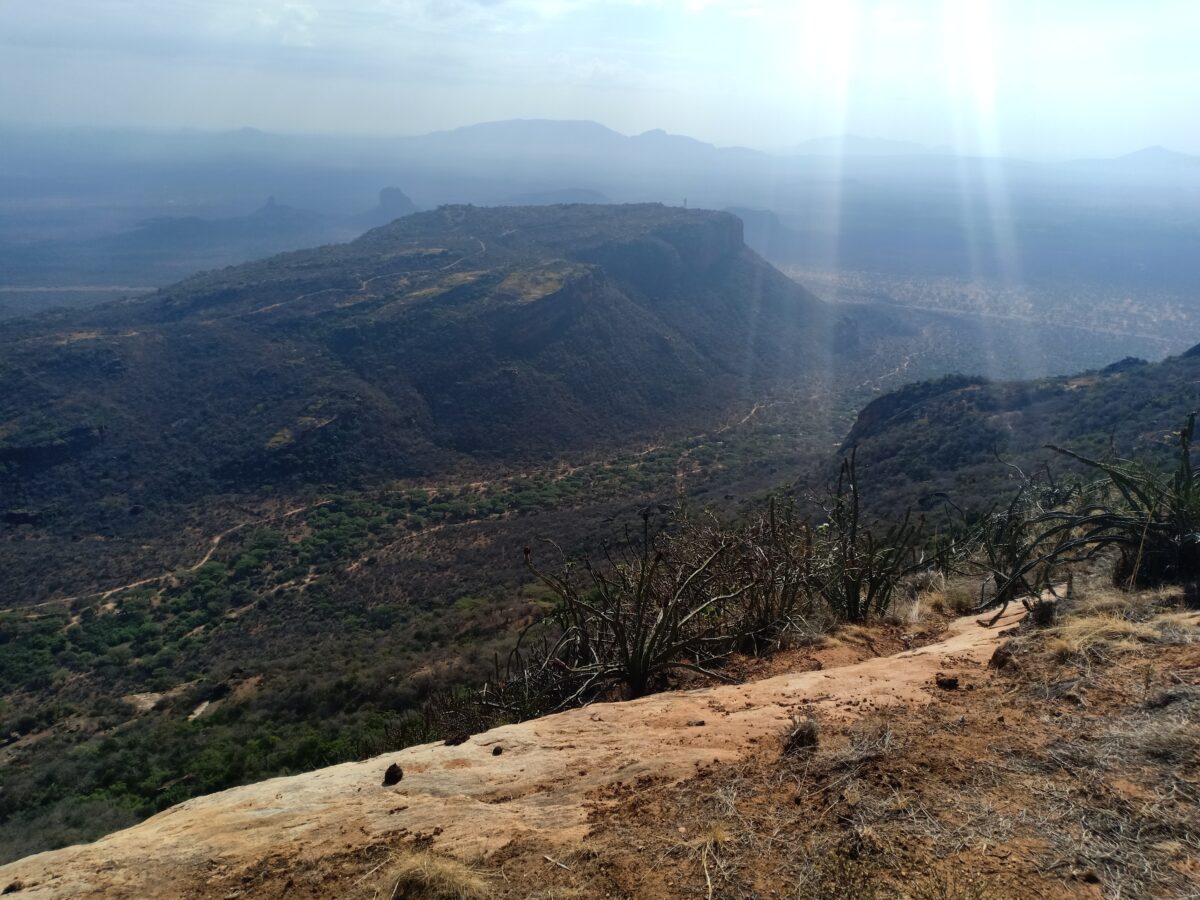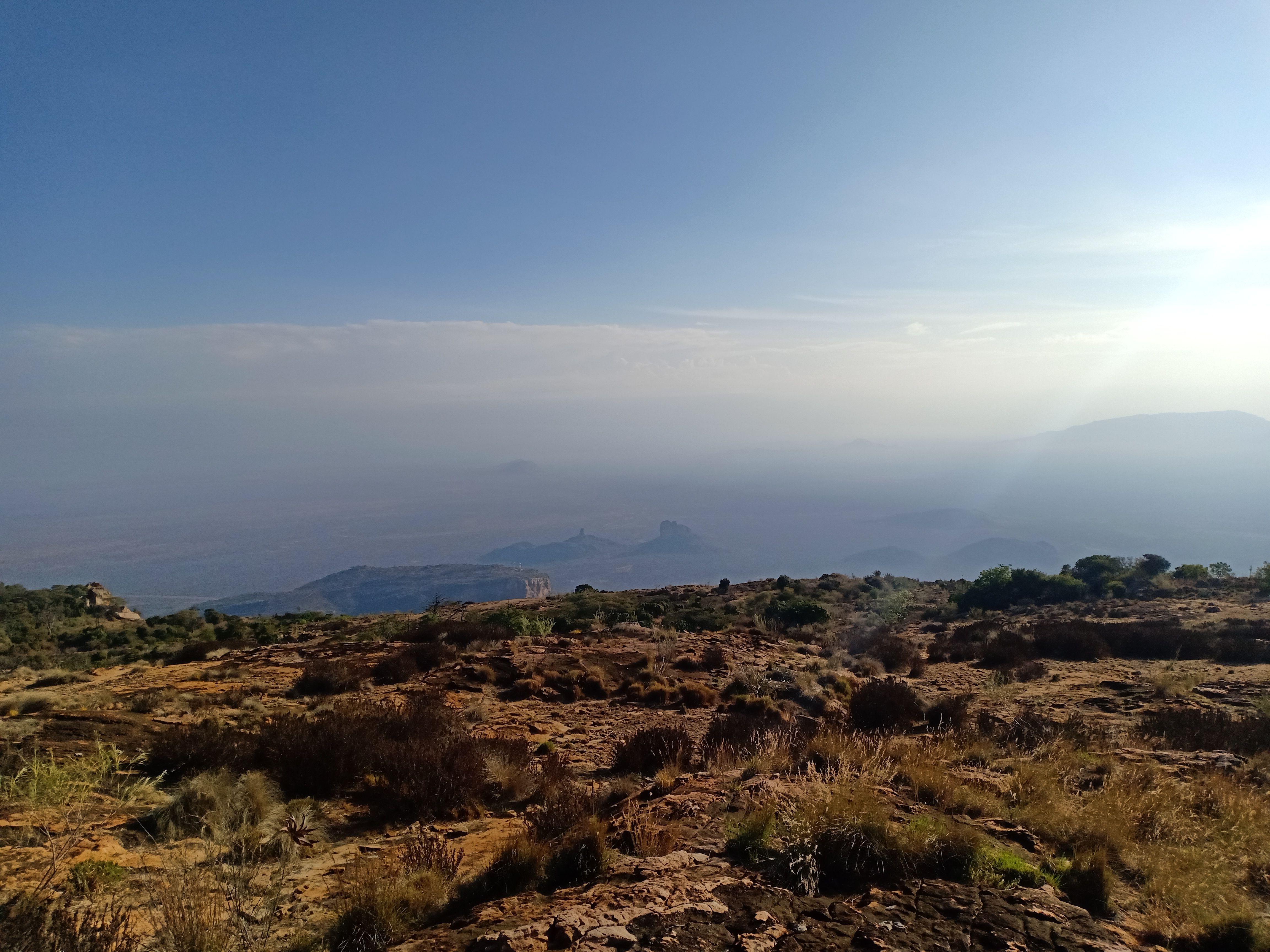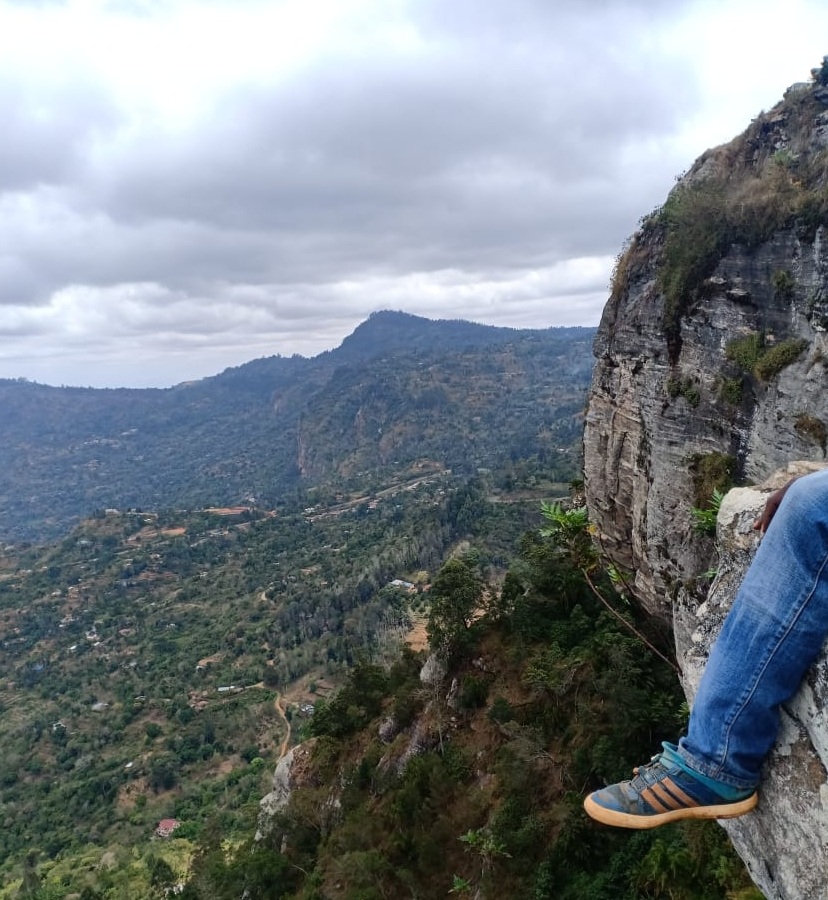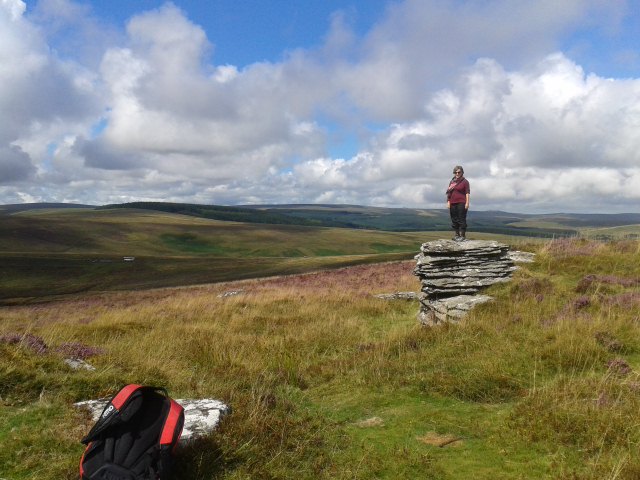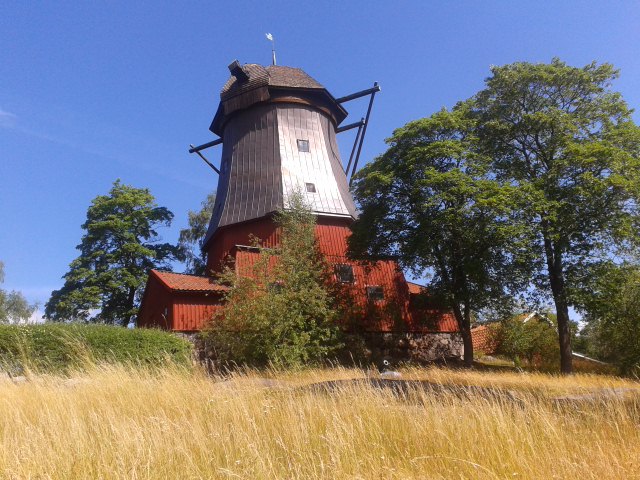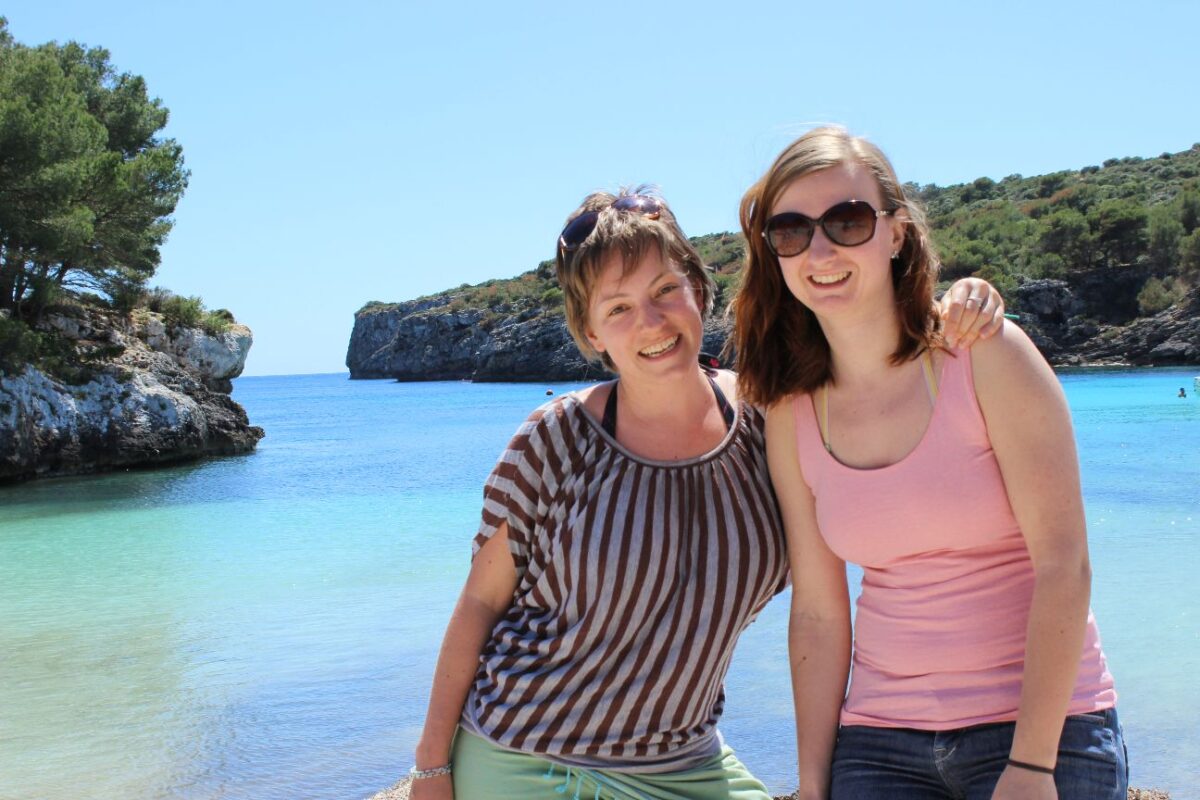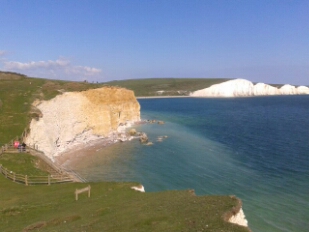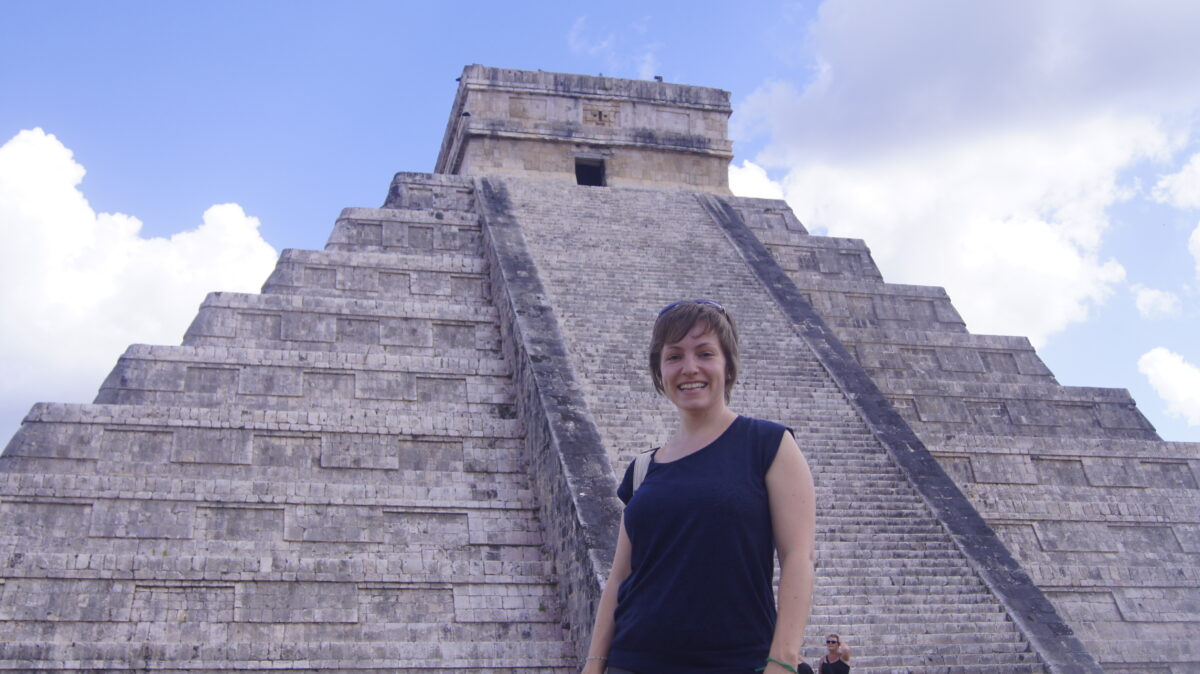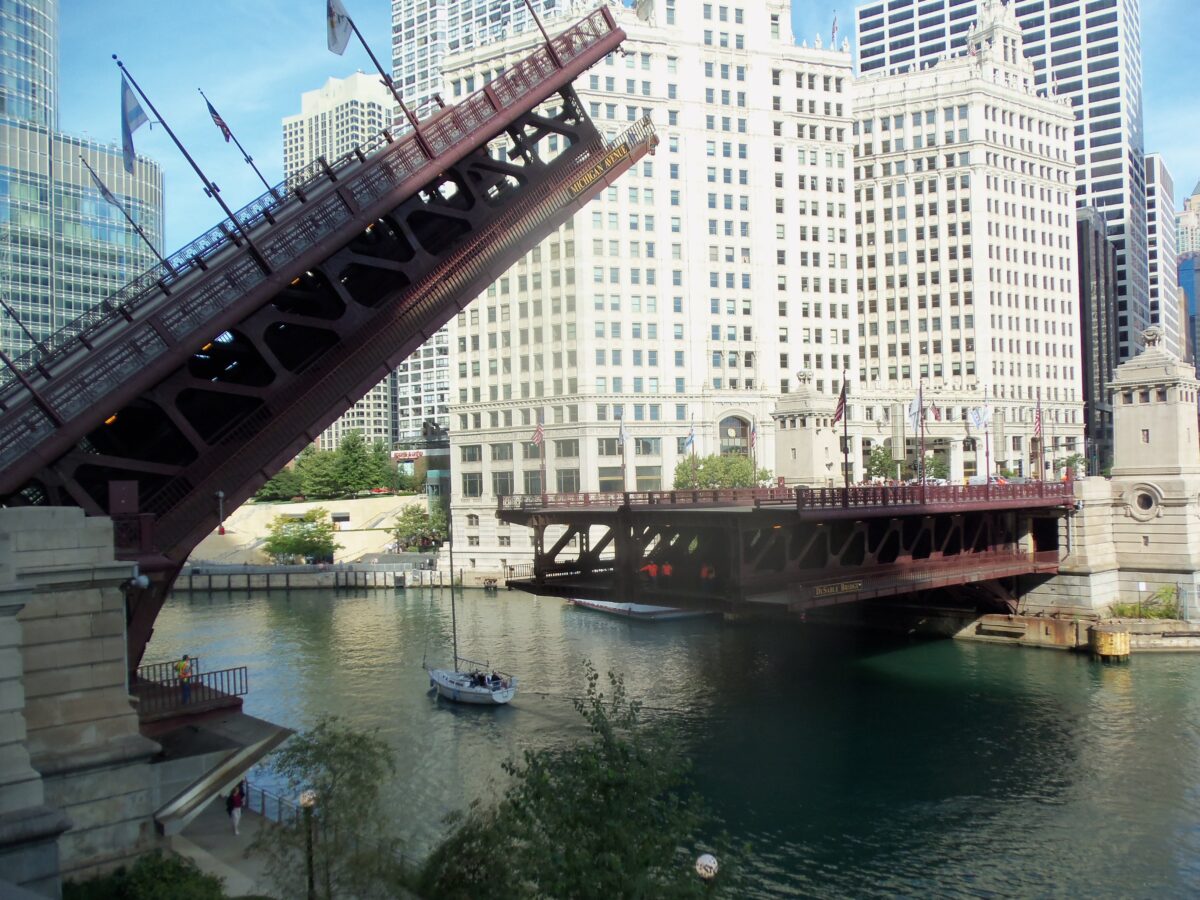The Eastern shore of Lake Turkana has fascinated me for long. The many conversations with riders about their South Horr and Loiyangalani adventures had caused some major FOMO and my curiosity was through the roof after my recent Lodwar/Eliye (blog here) and Samburu (Mt. Ololokwe) rides (blog post here).
But I had quite some respect and wasn’t keen on doing it alone. My concerns included having a puncture in the heat and managing the rocky terrain in crosswinds.
But June was coming, and an adventure was due! A friend and I put together our thoughts of touring Samburu: Going up via Laisamis, spending some time hiking Ndoto Mountains around Ngurunit (watch this video that inspired us!), then coming down via South Horr and Maralal.
Then Shakir, another adventure rider pitches his idea of going to Loiyangalani passing Chalbi. I’m excited about riding with him, because he’s easy going and there’s a lot to learn from him.
We put together our dates and route ideas and came up with a 6-day riding route: Maralal-South Horr – Loiyangalani – Ngurunit – Archers Post – Nairobi. Then we decide to add two tourism days in there to really soak in the beauty of Marsabit and Samburu counties.

In the end, five of us commit to ride together and split the planning and organizing work. After bouncing ideas on a whatsapp group for some weeks, we meet for coffee to discuss the route and expectations.
I’m slightly intimidated by the idea of riding with 3 BMW GS and a KTM, considering my engine is 125cc and it’s not an adv bike I can stand on while riding. You really don’t want to mess up the group in a hot desert…
Imposter Syndrome is calling! Having hacked Turkana alone, I know that I can summon the mental strength and physical endurance that really matter on such trips. My bike has off-road tires, an upright seating position, good ground clearance, light enough for me to handle it on sand and allows me to stand up for 5-20 meters on bumpy stretches – so we’re good to go!
Day 0 – Packing & getting the chain tightened
I decide to finish packing at 7am before hitting my desk.
I got myself a 30 liter water and dust proof sack (‘speed bag’) as an upgrade from the backpack plus gunia combination I used in Turkana in December (the zip broke on only 200km offroad, so anything zipped wasn’t going to be a workable solution for what we had planned)
For myself I decide to pack light: 3 t-shirts, 3 sets of underwear, sunscreen, sports bra, bikini. Sneakers and linen pants for the evenings. Laundry soap would get me through the rest!
Health checklist: Besides a first aid kit, I carried mosquito repellant (DEET), pain killers and ORS and H2Pro for hydration. I added UTI antibiotics and an antifungal cream to my kit (the female readers might know why).
Safety Gear: Expecting 35 degrees upwards, I got a new mesh jacket from GearHub (turned out to be the best purchase I did in a while!), and decided to wear my rain gear on top to prevent getting cold on the highway. I declined mesh pants and went with my riding jeans, because they are pretty loose and usually don’t make me feel hot (I also wanted the Kevlar for the eventuality).
Bike: Full tool kit, an extra tube, puncture spray. A team member carried a compressor that is powered by the bike battery.
After a full day of finishing up work, I head out at 6pm to get the chain tightened. I had done a full service last week including replacing brake pads, so felt really confident about the bike. The mech’s watchful eye catches another issue: The left front shock is leaking oil.
Very strange because the Spirit mechanic, who is really experienced had changed the seals just the other week!
Well, here we are at 7pm, spare part shops in my area are closed. The curfew is really not helping. I’m told to reschedule my trip, as there are no parts. After making a bunch of calls, parts arrive at 8pm. The front tire is removed, the left seal changed and both shocks balanced with fork oil. The local mech plus my mech do their best with phone torches (!), after a power cut leaves us in the dark on the road side.

I also get a quick carburetor service. It just never hurts.
At 9:15pm I test the bike successfully and head out to get a last accessory from Wambui, a light bag to carry water and snacks for the day.
On the way home I realize that the front brake is not working… Did air get into the brake system when the tire was taken out?
At 22:02 I roll through the gate. I find a fresh bottle of brake fluid which I pack, and ask around for mechanics en route.
Day 1 – to Maralal 330km
We’re heading to the desert, but it’s 15 degrees, drizzle and fog as I pass Limuru.

I arrive at Total Kimende at 8 and am lucky to get a fundi who professionally bleads the brake before the Ngong Road team arrives.

Avoiding Nakuru highway, we take the Aberdares route to Ol’ Kalou, passing Kinangop and Engineer. I spot a car lying on its roof in a field and we stop to see if we can help. We’re told the driver “is fine” and continue.
We get to Nyahururu by lunch time, fuel up at the Shell (last one until Isiolo!) and eat at the resort with a view on the waterfall. We get some amazing coffee – maybe the last one for a week?

Continuing to Rumuruti, we find smooth tarmac!

From Mugie Conservancy onwards it turns into off-road, with some gravel. We stop to soak in the scenery and I get a few tips for dirt road riding.

Lesson 1 – Vision: Look where you want to go.
Staring down at the 2-5 meters directly ahead of you means you slow down and you constantly feel like you’ll be falling.
Where you look is also important in tarmac riding, especially in cornering or with obtacles: Look where you want to go. Don’t look at where you don’t want to go (obstacles, holes, a heap of sand). Vision guides your body and by extension the bike.
But this is a bit different from tarmac, where the vision runs like a movie: On gravel or rocky terrain, you should take mental photography snaps of where you want to pass. On a rocky down hill you see that you will safely pass here and then there and then land there. This allows you to look at least 10-15 meters ahead.
Lesson 2 – The bike knows what it’s doing. But it needs momentum to stay upright
Even when it gets wobbly, the bike with the help of physics will find the best way. In summary, the bike knows what it’s doing. Don’t get in the way by trying to control the steering too much. Keeping lose hands, and with enough momentum, small and also larger back tire wobbles will straighten out with momentum (this will later be impressively proven by Jimmie on his GS1200Adv in deep sand).
We reach town and stop at a pharmacy where we don’t just pick up antihistamines but also stern security advice about bandits up North. Then we head up a relatively smooth, slightly sandy and narrow path uphill to the beautiful Ngari Hill Ecolodge.

Excited to have made it, I unload my bike. As I tighten the side mirror, I spot an unsightly view: The left shock is leaking oil AGAIN! It occurs to me that getting the seals changed in Maralal would not just delay our departure by several hours, but also lead to no other results. The problem must be the shock itself, not the seals. I consult a few riders who all assure me that I can ride with a leaking fork, as the main job is done by the spring and not the oil. Djo suggests to tie a cloth around the shock to avoid oil on the brake disk. 10 brownie points right there!

Discussion over dinner about what we do if we meet bandits. We appoint one speaker among us, who has worked with communities up North for seven years and knows a few words in different local languages. We agree to stay calm and negotiate our way out. The hotel staff advise us that it’s safe but we shouldn’t stop, both between Maralal and Baragoi and then Baragoi to South Horr.
Day 2 – Maralal to South Horr – 145km
Part 1 — 100km to Baragoi. Estimated 3.5 hours.
At the gas station we fuel up. As I experienced on my Turkana ride, the tire pressure devices in the North tend to not work. We use the little analogue measuring device that Shakir had brought – it looks like a cigarette.
We agree on a strict formation – no overtaking to keep everyone safe on the off-road. The KTM is leading, I follow suit, and the 3 stronger GS stay at the back
After some confusion which road is the right one, we head North towards Baragoi. The day starts with some basic dirt roads. We ride along a mountain range. Ups and downs, some gravel, some sand, rocky patches, some corrugated patches.

I master 30 to 50, and we move together as a group. I’m trying to pick up speed, as the other 4 zoom through the rough roads standing on their bikes.
It’s a pretty amazing route, feels adventurous riding through tiny settlements and over hills. Suddenly we find ourselves in the wilderness, no more settlements, just nature.
Maybe 4 or 5 more technical patches with rocks or gravel on downhill. On my Turkana trip I asked a stranger to help me. Now I use the tips I’m given. And they work! The steeper downhill parts have some cement which is really helpful. Today we descend from 2,500 to 900m altitude (as the GPS will tell us later) and at some point I can feel it in my ears.
Oooops, a wide sandy corner that I hit at 35 where 20 would have been smarter. Serious wobbles but the throttle gets me through. I’m so excited watching the physics work for me, too!
As I stop for a bio break, a car (the only car we meet that entire day!) stops to check on us. They tell us not to stop anywhere.

We get to a viewpoint of Suguta Valley. It’s breathtaking and as we hydrate, we goof around to take some photos. We then realize that we’re looking at the area where over 40 police men were killed when trying to arrest cattle rustlers in 2012.
We finish the mountain range and get to planes. We enter a settlement called Marti, well-guarded by police. As we stop under tree for a water break, within a minute, the entire village rocks up to stare at the bikes and the aliens sitting on these bikes. Suddenly, an older lady shows up and shouts angrily “Turkana, this side!”. The Turkana children rush to go back to their side of the road. Our friend who used to work in the North for a number of years explains that many of these settlements are separated by tribe: Each has their side of the road and mingling is discouraged. I would never have guessed.

Around 10km before Baragoi, I hear a rattling metallic noise on the right side of the bike. I stop, but can’t spot the problem. Exhaust, footpegs, number plate: Everything seems fine. We continue to Baragoi and I try to ignore the noise.
While fuelling, one of the 30 bystanders points out that my right shock is broken. Actually, it is loose: The shock has come out of the small metal that holds it to the frame. This is stranger than fiction – how would this have happened?
Before I can think, chaos erupts as 6 self-proclaimed fundis fight over who is allowed to fix the issue. I usually like taking my time to analyze a bike issue and consulting a few brains, before jumping to solutions. But they energetically bring various spanners (none really fits) and finally bring an adjustable wrench and somehow hammer the shock back in its place. It seems tight and we roll on 50 meters to a lunch place.

Maslah Hotel is run by a cheerful Somali lady. She brings Pilau and makes us fantastic spice tea.
An elderly naked man with a massai blanket over his shoulder walks by casually. No one including himself seems to notice. To make sure I’m not hallucinating, I turn away and look again. He’s strolling up the village road commando. It’s been a good 15 years since I last saw this – it was in Sachsenhausen in Frankfurt.

We have 41km left to South Horr and agree not to stop because of bandits and in order to arrive by 4. Just 1km out of the village, the shock gets lose again. We load my luggage on another bike and continue.
I’m in front. The guys are allowing me to set the pace. I ride sitting on the front tip of the seat and squat/hover more than I sit. No one wants to imagine what would happen if the second shock gave in (I’m later told that this would have been very unlikely, and the ideal thing would have been to stiffen the adjustable shock).
The bike has much more play on the gravel and sand… Nevertheless I’m doing 45-60 and starting to get the hang of the rough roads.

The KTM and I keep taking turns on leading the group, helping to keep a good pace, where one gets tired.
The green picks up. Finally some houses. Breathtaking scenery with mountains and trees.
I stop outside a church and chat up some locals. My swahili gets flawless once I leave Nairobi. Aha. So this is South Horr!

But where is the team? They were right behind me the entire time. My KTM comrade and I make a few calls to find that one of the GS has a puncture – on a tubeless tire.
He returns to support them as I wait at the beautiful wide river under trees. I play with the kids and chat with the church elders. A pleasant place and I can see myself staying an extra night or two doing yoga by the river all day, if the bike can’t get fixed to continue to Loiyangalani.

I get the number of a mech who has welding equipment and call him up to make sure he doesn’t lock up early on a Sunday. He’s called Kimani. Aha. All the way up here. Facepalm moment.
A part of my shock is aluminium (so can’t be welded), so they chop up an old shock they got lying around and weld it to mine. It fits!

The left shock is now leaking some oil from the double work over the last 60km, but I decide that there’s nothing to do here. The mechanics are professional but rather high on something. Donkeys walk around the garage and the village’s bodas assemble to watch.

Around 6pm I test my bike. It works like magic!
Fixing the puncture turns out much harder as the hole can’t be found. They put a tube into the tire (thankfully we had one!) which is taking some time. So I’ve got a few minutes to take a few selfies along the river.

Just before sunset, we take some deep sand to the guest house.
Lesson 3: Lesson 1 and 2 also work on sand!
We check into the guest house. (Dashalama Guest House at 1k per person and night). The entire town is off-grid, so we charge the phones on the solar. Only one shower works at a time, but we all manage to remove the dust and sweat of a long day!
One of us heads out with the cook to speed up dinner, chooses two chicken to be killed and does his best to find a halal butcher. Great conversations on the rooftop looking at the stars, while the team prepares the chicken and ugali from scratch (on one jiko). We have dinner at 10pm. Despite or maybe because of the wait, the chicken tastes fantastic.
Day 3 – Jade Sea – 91km
I wake up at 3:30am with a massive headache.
Nervous?
Vaccine side effects? (got my 2nd shot just 4 days earlier)
Dehydrated?
I consult a few friends and down an entire bottle of water.
We take the deep sand back through South Horr and have rolex and chai for breakfast next to the fundi’s place. In fact, if you ever eat rolex in South Horr, you’ll know its cooked by our recipe. We call it Rolex GS… Prepared with kienyeji eggs. So yummy.
By 9 we’re on the road and pass the sandpit of South Horr a third time heading up North. Relatively smooth road, some corrugations, some slight sand.
We’re picking up speed.
In some heavily corrugated place, my number plate gets stuck in back tire and breaks into two pieces. I had noticed that the back seat is a bit lower due to shock issue but this was entirely unexpected! We pick two spanners, remove the number plate and put it in a top box.

I send my location to a friend on whatsapp who cheers me on considering that we’ve nearly made it! I leave the rest to get a head-start. I kid you not, 500m later my foot peg breaks and falls off. I stop the bike and take a deeeeeeeep breath. It had broken somewhere last year in Pokot (link to blog post here), and clearly right here, 8,000 kms later is where the welded replacement chuma gave in. I have less than 1cm to rest my foot on, standing impossible, gear changing needs acrobatic skills. What tf is this trying to teach me?
I turn the bike and as the guys catch up I declare “I don’t know if this bike will make it to Loiyangalani today”. They won’t have any of it, stating that we’re all in this together and that it’s easy to go back to South Horr and get it fixed. The entire team returns, meaning 22km and a bunch of sandpits extra for everyone. Positive body and otherwise language. The support from these guys is magical!
I later tell a friend that as a person who’s always there for others I’m still learning to accept unconditional help without my ego feeling triggered. Adventure rides are about the new techniques, the selfies and the scenery, but if you allow, they’re also about humanity, community and the soul.
Grinding and welding again. A new footpeg? I’ve done this before in Marich Pass, so the mech and I agree in a few seconds on the modus operandi. He quickly unplugs the spark plug to avoid a short. Meanwhile, the guys are sorting out a loose handle bar on a GS.
At 11am we head out again.
After an hour, the wind farm road (the road that was constructed for the lorries that carried the 365 turbines up here from Mombasa in 2016) joins us from the right. We’re on a wide and smooth track now. I can feel some wind but not what I expected. The road looks like it was recently cleared or graded. We hit 90 and are cruising happily, leaving dusty clouds behind us. It’s mostly downhill. There is even some tarmac.

We get to the windfarm itself. Temperature check at the gate (yup, the pandemic is sadly still on!). A few goats and well, the turbines.
Not long after leaving the last turbine, we set eye on the lake. The Jade Sea. The cradle of mankind. Jade is greenish blue and we’re getting the best of it today.
We take photos and videos and goof around.

Rolling down to the lake on a cement road, volcanic rubble and hills as far as the eye can reach.
People making a living here for tens of thousands of years. Incredible.
Maps tells us it’s 23km more to Loiyangalani.
Volcanic rocks of all sizes covers the entire place. From pebble to baby head size to football. This is what I imagine the ride up through Koobi Fora and to Ileret to be like.

Based on experienced shared by other riders, I expected a difficult ride through baby head sized rocks trying to stay upright with tons wind. But the universe loves me.
The road was recently cleared. We ride in the tire tracks.
Slight corrugations and gravel and a few rocky patches.

It’s difficult, but nothing too technical. An endurance game mostly at this point.
I keep working with the changing territory. Going around 25-35.
One GS is low on coolant and starts overheating so we agree that two of them go faster and so they zoom off and disappear at the horizon pretty fast. The KTM rider heads out, too.
The sweeper is stuck with me.
He’s this patient guy who makes you feel comfortable.
I am 200m ahead of him as he stops at a cliff. I wonder if I should get a headstart or wait for him.
I imagine that he’s taking pics as I move slowly, so I keep going and wait another km ahead on a hilltop.
Good call. He catches up with me but has a front flat. Again.
We call the rest who have all the necessary tools. Our calls are unanswered and we leave texts and decide to keep going at 20-25.
Now I’m sweeping the sweeper and catch a few good snaps as we do the final 10km into Loiya.

One group member comes to meet us with the fundi. We head to the hotel through some panya routes and amaze the kids.

We are Dusty (capital D!) from top to bottom. It’s time for laundry!
While it is winter and only 39 degrees hot, I find the soap melted inside the bag.
The puncture is fixed pretty fast, and I sit with the guys to have my first beer in a year. The bitter cold is refreshing and invigorating.
We talk for long this evening as we know we have a rest day ahead. We get to know each other’s stories and backgrounds.
And incredibly diverse group: Not just the bikes range from 125 to 1200cc but also the professional backgrounds, races, religions and the age groups are a colourful mix.
What unites us is the love of adventure and nature and a sense of maturity and responsibility for the wellbeing of the group and trip success.
A few examples: Those sharing a dozen beers an evening were awake before 6am every day, not delaying our early departures by a minute. The Muslim riders went for prayers consistently wherever possible. And Allah was with our group all the way, there’s no doubt.
Day 4 – Tourism day at Lake Turkana
During my last visit to the lake I didn’t visit any of the islands. Central Island with its crocodiles and the crater lake is hours away from Loiyangalani, so we took a boat ride to South Lake Island. We’ve all heard of boat engines failing on the lake, so we took a dual-engine boat recommended by KWS. With 26k it is not a cheap endeavour but affordable if split in a group of 5 or more. The boat can take 5-7 passengers.
We head out on the lake on a bumpy ride riding on and against the waves. We joke about how the boat knows what it’s doing and that the captain is looking where he wants to go. Team Germany and Austria are putting their lives in the hands of Japanese engines today.
Breathtaking scenery on the island itself, we climb up and later watch some crocodiles from afar!




We’re back at 3 for a late lunch. The swimming pool at Oasis Hotel is closed, so we take an easy afternoon and later head down to the lake with some drinks and snacks for sundowner by the lake.

Do you still remember how to make pebbles jump on water? White Cap helped some of us rediscover the technique 😉

Day 5 – The sandpits of Ngurunit – 160km
We leave Palm Shade early and fuel at the petrol station in Loiyangalani.


After consulting about the route, we decide to go via South Horr (pretty much the google maps route) and leave the Windfarm road aside, which hasn’t been maintained well as we’re told. A friend texts me “At least you’re becoming better at sand”. Yo!

Let me also talk about adventure riding while female… How do you manage periods up here? No tree to hide behind and no tap to wash your hands? I’m not a member of team menstrual cups and in city-vicinity tampons tend to do the trick. Pads on motorcycle seats are just not comfortable, but I had no choice other than double layering.
As a responsible group member I choose to tell one of the guys that I might be taking a few extra and longer breaks and why. I top up the paracetamol level in my body but no cramps on the horizon. Turns out that it’s all doable. Ladies, carry all supplies from home, extra tissue paper or wet wipes and a plastic bag for carrying the litter.
But this doesn’t turn out to be my challenge of the day. Today the WIND (all caps!) has decided to blow. I’m told it’s still nothing compared to other months, but wow. The trick is to counter steer into the wind. The wind keeps changing its direction and intensity so at times you tumble a bit. It’s quite tiring so we take a break once up at the wind farm for a small photo shoot.

We change the formation to allow the GS to lead in order to cool off (low coolant levels). We manage good speeds because we know the road. I’m at the back with the sweeper and we keep stopping for photos and calls of nature.
We enter South Horr through the now well-known sandpit with deep tire tracks. Suddenly, the tire track in front of me climbs up to the left sand wall then veers off to the right.
Some local kid on a boda must have had fun here and I summon all my mental strength to go through it straight and not fly out of the track.
While parking at the lunch place, I mention to my guys about the boda guy who messed up the nice track. Turns out it was our lead, who managed to catch his bike, but a following rider ended up buying some land right there.
Off we head to Ngurunit. It’s 70km and we estimate 2 hours!
It’s a wide road that changes between light and heavy corrugations between beautiful mountains.

We cross at least 5 long luggas (dry river beds with deep sand) and become better each time.

Lesson 4 – In sand you can’t afford to slow down. Because then the weight goes on the front tire which then digs into the sand and well – the momentum of the bike destabilizes you. Unintended Dismount follows. So what works?
There’s the easy but steady throttle technique. Works magic esp on lighter bikes. With this, I hacked 50m long deep sand without needing to tap my toes or walk. What an incredible improvement since Eliye Springs in December!!
But even more interesting is the vroooooom technique (I’m sure there’s a better name), where you gas it (short throttle pushes) through the sand (approx 1 to 1.5 twists per second) to raise the front tire and give enough momentum for the wobbly or swerving back of the bike to align and the bike to stay upright (the earlier discussed gyroscopic and other forces).
And finally, my first fall – a direct result of slowing down in sand, as I turn to enter the gate of our lodging, Golbo Guest House.
Falling in sand is quite fun IF you have protection for shins and ankles.
Because a heavy bike falling on your ankle can mean a fracture or (better scenario) a large and colourful shin bruise… And so I learn about the difference between riding boots and off-road boots on this trip.
Dima runs this chill place with various options: Camping, manyattas and huts with shard bathrooms and self-contained rooms.

After watching the camels come home that night, we have dinner under a tree. Shakir entertains us with some of his stand-up comedy wins and debacles. This team’s got courage and talent!

Day 6 – Through sandpits and tarmac to Archers Post
Today has two parts: 70km off-road to Laisamis and then 130km along the Moyale highway. Based on our calculations we’d easily make it by 4pm if we leave at 11am.
So we have 3 hours to go and see the rock slides and natural pools in Ngurunit. We elect to ride there on a pick-up truck, worried about any accidents or injuries on the homerun stretch. Honestly: If you’ve done well on the rocks and sand so far, you can make it to the rock slides (or rather up to where the car can make it, which is 500m to the pools)! Get directions from this gpx file I recorded here on Wikiloc.
It’s too much fun. We swim in the shallow water and slide again and again on the rock slides. Adults turn kids and we laugh and laugh. You don’t even need to know how to swim to have fun here.

Back at Golbo Guest house, we pack and gear up and head out towards the East. We pass through 5 or so longer sand pits in total. Around 40km of the road is heavily corrugated, some with gravel, some with rocks. Today’s ride is becoming a stamina boot camp.

In Namarei I get one liter of fuel in from a kiosk selling fuel in plastic bottles (160 KES per liter). We meet an upbeat flatbed driver who drove overnight from Nairobi to pick up a car “that kufed up there”. He tells us that there’s a road directly next to the heavily corrugated road. “It’s all sand. Perfect for bikes. You’ll be fine!” (The disbelief was painted all over our faces.)

Then, about 15km to Laisamis we see something dark blue up ahead between the trees: Tarmac!
We pose and take pictures as if we had never seen tarmac before.

A little pre-mature, as there’s another diversion with sandpit ahead where a GS takes a nose dive.

We fuel in Laisamis and have lunch.
Soooooooooo many people!! It is overwhelming after the week of solitude.
Another 100 clicks on the tarmac to today’s destination. Quite boring riding. The brain is under-stimulated on the smooth tarmac but my playlist gets me through.
As we approach the Wamba junction it gets more scenic: The cat and mouse rock formation to the left. Then a police stop at Mt. Ololokwe. We are told to remove and open all luggage. Yikes.

Once in Archer’s Post, I lead the team along the 2km to the camp. But who brought all this sand here? I remember a smooth road from my last visit in March!
A split second of confusion at a deep sandy junction, hand off the throttle and I’m down. It’s becoming a joke. I only fall at the gate of the place where we’re staying.
We drop our stuff quickly in the tents and take in the phenomenal views of the Ewaso Nyiro river.

I’m glad that my recommendation for the Lions Cave Camp is creating happy smiles on my riding buddies’ faces. Rose and her team prepare goat choma and I have my second cold beer in a year, sitting on the cliffs over the river.
(Cheers to Andy for this great tip!)

Day 7 – Tourism day: Game drive
We had hoped to do a game drive in Samburu Reserve. Again, being a group makes this affordable. We pay 10k for a landcruiser that has 7 window seats.
We see lions (with 2 cubs), zebras (a special breed up here!), giraffes (the reticulated ones), elephants (at least 20 along the river), pumbas, and a whole bunch of different gazelles and birds.
We discuss climate change and listen to tales of a pioneering life-saving operation on a cheetah that our group doctor Jimmie participated in a year ago.
We decide to have breakfast at Elephant Bedroom’s terrace (a lodge) and our driver makes a quick phone call to arrange this for us.
What a delightful and magical finish to our trip!




In the afternoon some nap and others chill along the river.
Day 8 – Back to civilization – The final 320km to Nairobi
We head South through Isiolo and Nanyuki.
At Isiolo I add tire pressure to be back at tarmac levels. It’s the first Shell and working compressor since Nyahururu…
This really makes the point for buying a pump or compressor for adventure trips!
From Timau onwards the 254 drivers are welcoming us back to civilization with the shitty treatment they accord bikes. An oncoming range nearly kills me, a Vitz overtakes me nearly touching my side mirror.
We stop for lunch at Trout Tree. Delicious food and a great setup. The restaurant is up in the tree on a platform over the trout fishing ponds!!

I part ways with my fellow riding buddies after lunch. How much we have experienced in just 8 days!! I will miss their jokes, the joint meals, the cheerful good mornings and their headlights in my mirror. To more joint adventures!
I’m staying an extra night in Nanyuki (Mianzi Camp) to join the ladies of Women Bikers’ Association for the annual retreat and some exciting strategy discussions and a night around the bonfire.
On the return on Sunday, I want to get off this horrible highway as fast as possible. At Kiganjo, I turn into Nyeri town and catch up with a friend for lunch, then choose the Othaya-Gitugi-Murang’a route back home. Around Gitugi, I get the best of Murang’a county’s scenery and lots of twists.
Entering Nairobi through Thika Road is always fun, when you stick to the right (fast) lane, cruising playfully with the cars and matatus who do accord me and my dusty plate-less bike some level of respect.
Once home, I stuff my clothes into the washing, and calculate my fuel consumption. I used 36.5liters on the 1302km (going by the fuel meters in the petrol stations), which is a 2.8 litre average. Consumption peaked between Loiyangalani to Laisamis (sand and wind?) with around 3l/100km.
Thanks to the amazing team, and to everyone who shared knowledge and cheered me on before and during this trip. You know yourselves 🙂
To more adventures!
PS: I returned to the Eastern Shore of Lake Turkana in Jan 2022. It was a crazy trip, much further North, more difficult riding, with roadside camping and boat crossings. Sibiloi National Park was mesmerizing. Check the pics and stories here.

